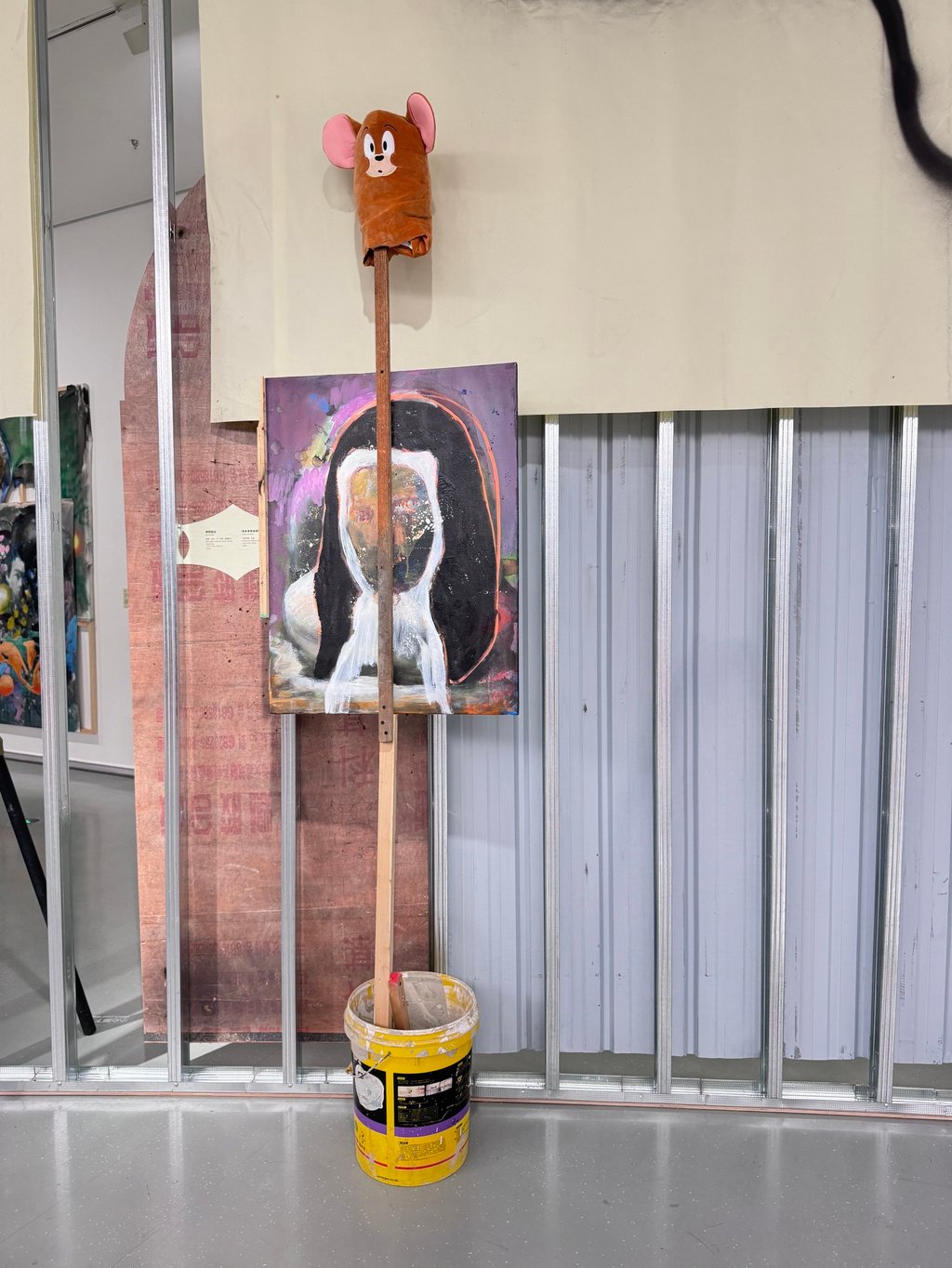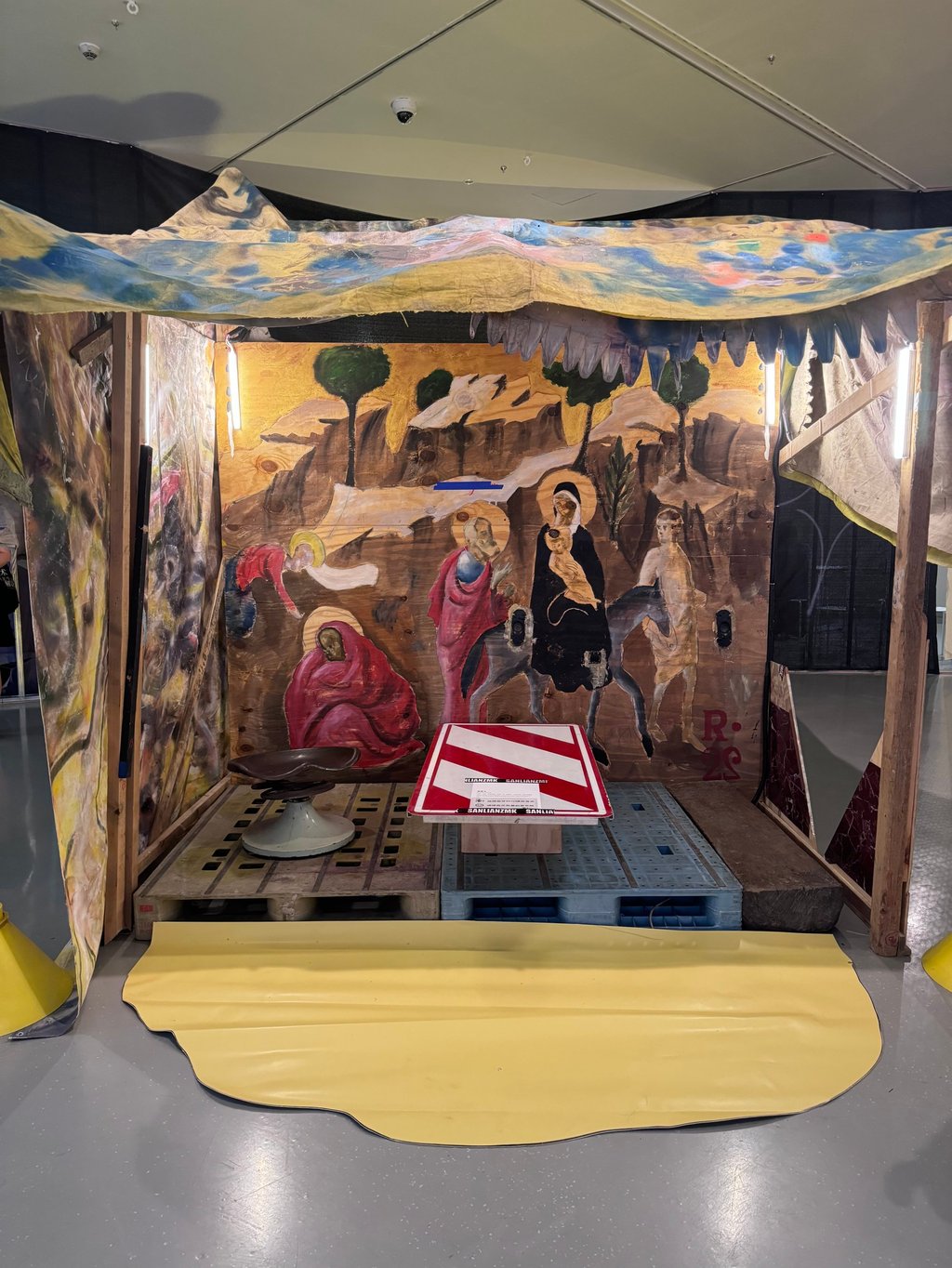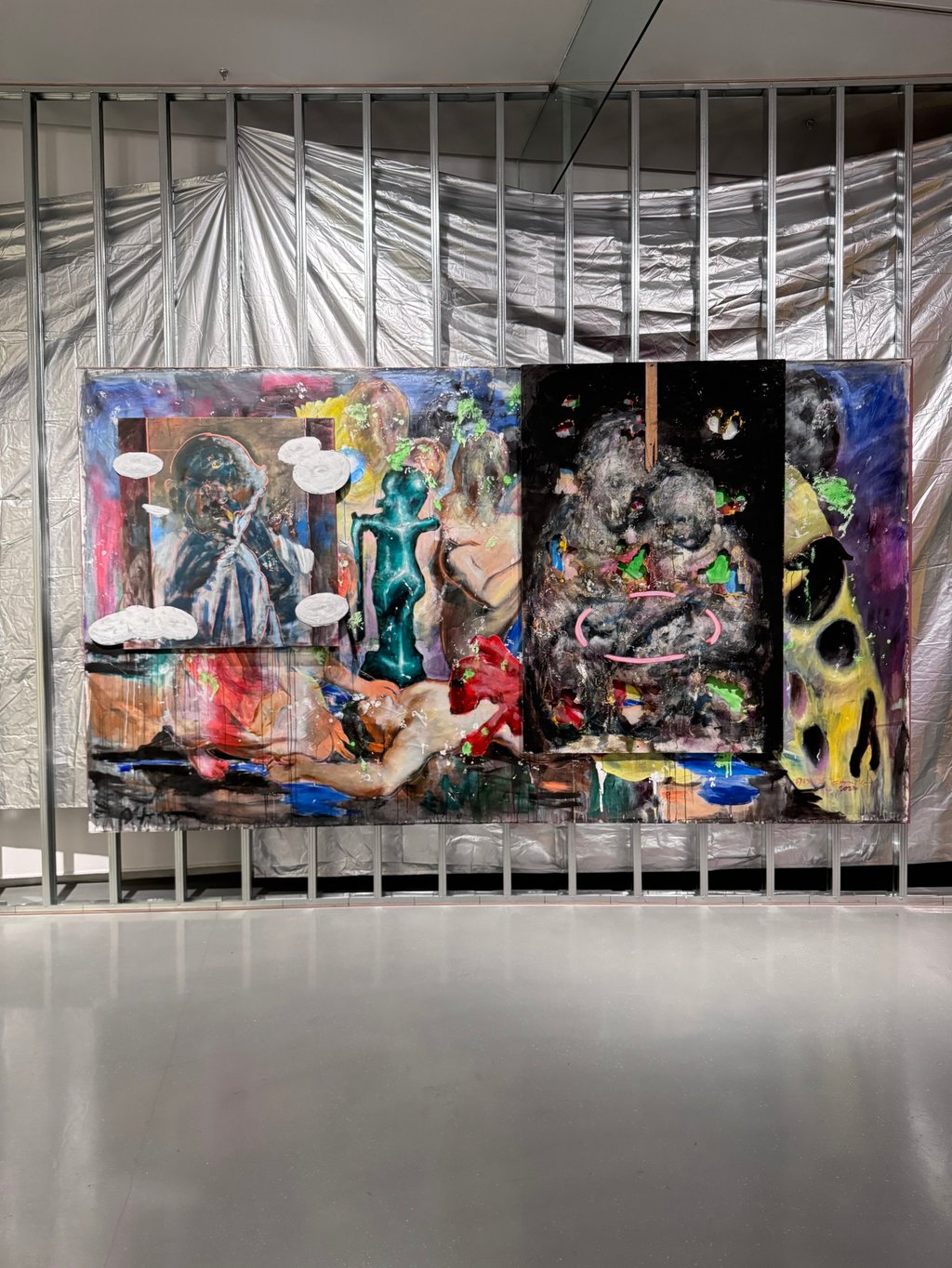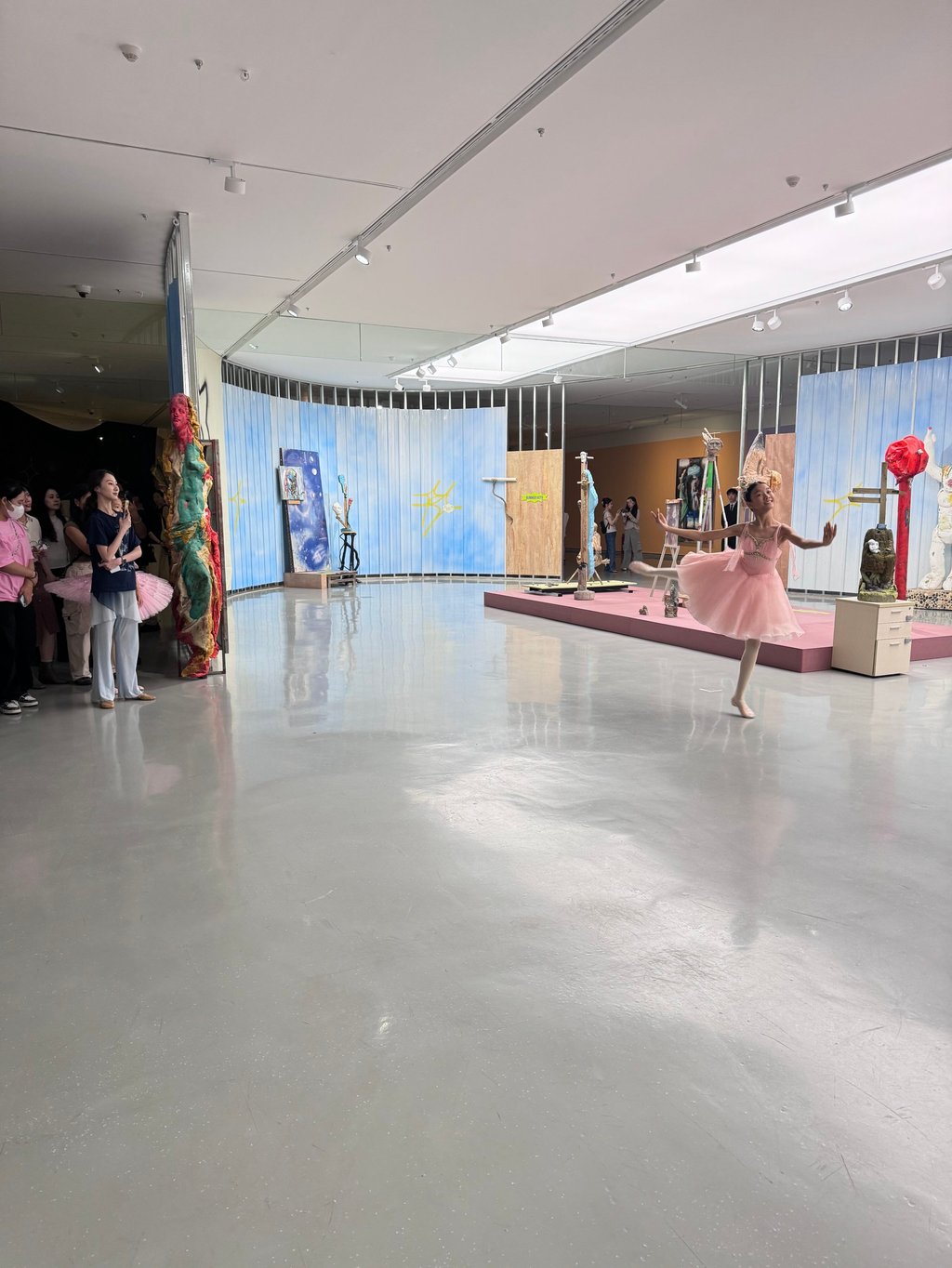Zhou has never set foot in Latin America. He simply decided to be creative with his answer after the show’s organiser told him to explain his art to his audience.

His made-up story can be seen as a nod to the tendency to expect a simple answer for why artists create what they do, when in reality few things are straightforward – and certainly not his chaotic exhibition.

Works by the heavily tattooed Zhou, 41, are grouped around stalls made from wooden crates and adorned with murals that borrow from Biblical themes – seemingly mocking the idea of the sacred, the heroic and of high art.
A plastic wash tub, for example, has been transformed into a totem pole, a grotesque head has been adorned with sunglasses and a green wig, and an abstract painting of a person’s head has been interrupted by a wooden pole – itself adorned with a puppet Jerry, from the Tom and Jerry cartoon series.
On the exhibition’s opening day, there was also an unexpected performance – the air filled with classical music as three young ballerinas began dancing in the middle of the gallery.
Zhou said the performance was another impromptu stroke of inspiration – he had noticed, during the exhibition’s installation at the arts centre, that there was a ballet school upstairs.
The artist, who grew up in the 1980s and 1990s, has seen China’s dramatic shift from closed, insular society to global economic powerhouse. The complexities of its rapid transformation are mirrored by Zhou’s approach to art.
He avoids having a recognisable style, something most artists strive towards, and he even nails his paintings on top of one another, regardless of the damage it causes.
Zhou’s quasi-religious murals can be seen side by side with paintings made on Chinese paper scrolls, some intentionally damaged or obscured, and wooden reliefs of Taoist saints. The overall effect is one of prosaic eclecticism.
“[Parisian designer] Charlotte Perriand of [studio] Le Corbusier designed numerous movable houses and furniture pieces using local materials to reduce costs.
“Ironically, what was conceived to meet basic needs became the most expensive items on the second-hand market after being rediscovered by French collectors in the 2000s,” Zhou explains.
In the same manner, his wooden structures made from scavenged materials become valuable when sold through a gallery, he adds.

Is Bauhaus an actual inspiration to him, or is this another tale spun by Zhou? It remains uncertain – after all, he agrees that his practice is a bit mo lei tau and uses deadpan humour to subtly critique and undermine authority.
The exhibiting of “Summer Huts” is part of a larger curatorial shift at SWCAC towards contemporary Chinese art, after its collaboration with London’s V&A Museum ended.
“However, we increasingly felt disconnected from the Chinese art scene. After the collaboration ended, we realised it was time to introduce more contemporary Chinese art to Shenzhen.”

Zhang says the centre received 4 million visitors in 2023 and she expects that figure to climb to 6 million this year.
She adds that the centre is dedicated to hosting two solo exhibitions annually for established and emerging Chinese artists.
“Zhou Yilun: Summer Huts”, Sea World Culture and Arts Centre, L2 Shenzhen UCCN Gallery, 1187 Wanghai Road, Nanshan District, Shenzhen. Monday-Friday, 10am-7pm, Saturday-Sunday, 10am-9pm. Until October 27.

